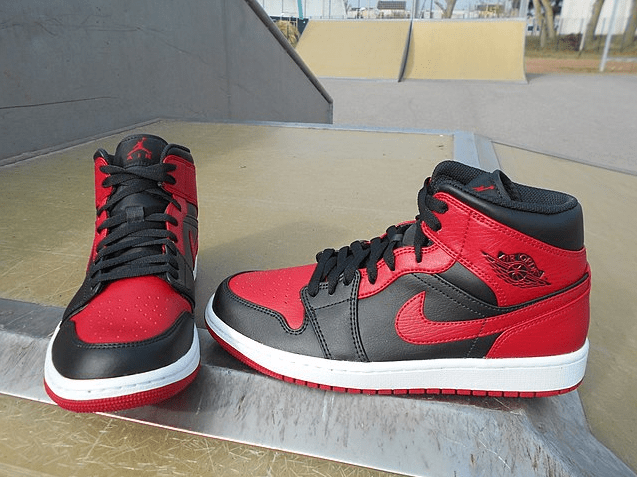Controversies in the running shoes and sneakers world are nothing new. Every major shoe company has, at least, faced some sort of backlash over the years for several issues, including (but not limited to): ill-conceived design, disastrous branding, and a complete historical oversight.
But as one would say, bad publicity is still publicity, and many sneaker companies benefited from both good and bad publicity. One famous case is the Air Jordan I, which the NBA notoriously banned for several reasons. But Air Jordan’s maker, Nike, used the controversy to its advantage by capitalizing and translating it into massive sales. Same as with online betting. Although there are some skeptics about playing pokies online, still, it has been proven many times that, indeed, there are sites that offer best real money online pokies.
But in most cases, sneaker companies have learned important lessons from these controversies. There are times, though, that they ended up being controversial unintentionally and through no fault of their own. While there are many controversies that have rocked the sneakers world, we mention only five here.
1) NBA’s “banning” of Air Jordan I (1985)
Michael Jordan’s first foray into the sneakers world didn’t receive the expected warm welcome – at least among the bigwigs of the National Basketball Association (NBA). When the young rising NBA star first laced Nike’s Air Jordan I, it stirred controversy. The iconic sneaker was reportedly banned by the NBA upon its debut in 1985.
Air Jordan I’s red-and-black colorway didn’t conform to the league’s strict uniform policy at the time. The shoe had very little white in them.
Jordan was fined $5,000 every time he appeared on the hardcourt wearing the controversial sneakers – a tab which Nike quickly picked up. The company soon capitalized on the bad publicity surrounding Air Jordan I into an ad campaign, translating it into big sales. The controversy even elevated the Air Jordan I, together with its wearer and endorser, to mythical status. Jordan eventually won Rookie of the Year in 1985 and went on to become an NBA legend. Air Jordan I’s legacy, on the other hand, is quite well-documented, and the controversial silhouette has gone to more tremendous acclaim in the last four decades, inspiring numerous retros and collaborations.
2) Nike’s SB “Heineken” Dunk (2003)
Slated to release in 2003, the Nike SB Dunk featured a green-white-red colorway. It was quickly and affectionately dubbed “Heineken” by the skating community as it was inspired by Heineken’s signature colors and trademark.
But there was one big problem: the Dutch beer giant called “Foul!” on the shoe’s colorway.
Heineken sent a cease-and-desist letter that forced Nike to pull the sneaker out from the shelves. But the controversy made the sneaker even more popular, eventually becoming one of Nike’s most sought-after and coveted Dunk releases. But it has become harder and harder to score a pair of original “Heineken” Dunks over the years.
3) Nike Air Bakin’ (1997)
The Nike Air Bakin’ made its debut in 1997 and was first worn by NBA star Penny Hardaway on the hardcourt. But its appearance was only short-lived.
The sneaker didn’t sit well with disgruntled Islam followers, who pointed out that the fire-like logo on the shoe’s heel resembled “Allah” when written in Arabic script.
Nike tried to amend the situation by concealing the logo with a fabric patch, but it wasn’t enough. The Muslim community later threatened a massive boycott against Nike’s products, which forced the sneakers giant to recall 38,000 pairs of Air Bakin’s. Not only that – Nike also publicly apologized to the Muslim community and built playgrounds for Muslim youth organizations in several communities across the United States and elsewhere.
4) Jeremy Scott’s Roundhouse Mid for Adidas (2012)
Adidas’ Roundhouse Mid has some of the most colossal screw-ups in the annals of sneakers design. The sneaker was scheduled to hit the shelves in 2012. The shoe’s design, created by the fashion designer Jeremy Scott, featured bright yellow shackles.
The shoe’s unusual and controversial cuffs strongly evoked notions of slavery. Scott insisted that toy monsters of the 1980s had inspired the shackles. Nevertheless, the Roundhouse Mid’s shackles drew intense criticism from many sectors, who associated them with a historical symbol of African slavery.
As Reverend Jesse Jackson commented on the issue: “The attempt to commercialize and make popular more than 200 years of human degradation, where blacks were considered three-fifths human by our Constitution, is offensive, appalling and insensitive.”
Needless to say, Adidas quickly pulled the sneakers out from the shelves.
5) Nike Ari Menthol 10 (2006)
So, how did a sneakers behemoth and a tobacco company get involved in this controversy?
Los Angeles-based graphic designer Ari Saal Forman customized the design of Nike’s Air Force 1 sneakers. Forman took design inspirations from Newport menthol cigarettes. He replaced Nike’s classic “Swoosh” logo with Newport’s Spinnaker logo, which was pretty much like the Swoosh, but inverted. The custom “ARI” letterform appeared on the shoe’s midsoles and heels. The shoe’s box was not even spared – it was designed to look like Newport’s cigarette pack. The shoe’s new look and packaging earned the name “Ari Menthol 10.”
Nike limited Ari Menthol 10 to just 252 pairs. But as expected, Newport wasn’t so pleased with the Air Force 1’s controversial spin that it promptly issued Nike a cease-and-desist letter. But it didn’t end there. The tobacco company later sent in their lawyers and demanded Nike to burn and destroy every pair of Ari Menthol 10’s.
Nike’s Ari Menthol 10 remains one of the most “forbidden” sneakers ever made.

